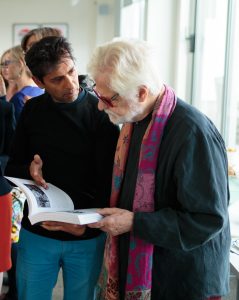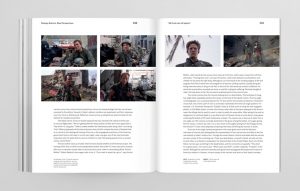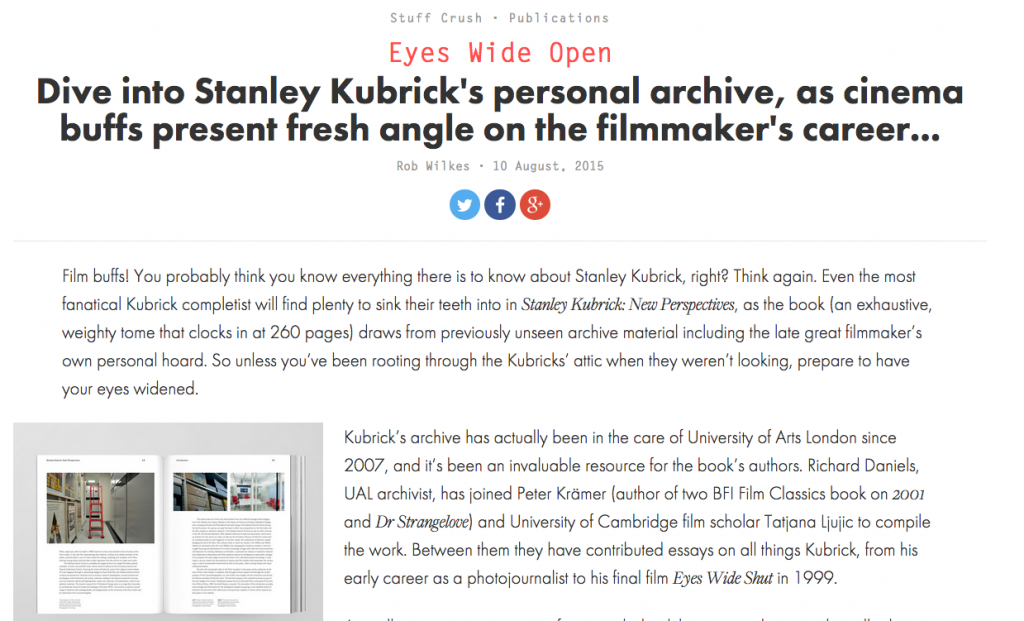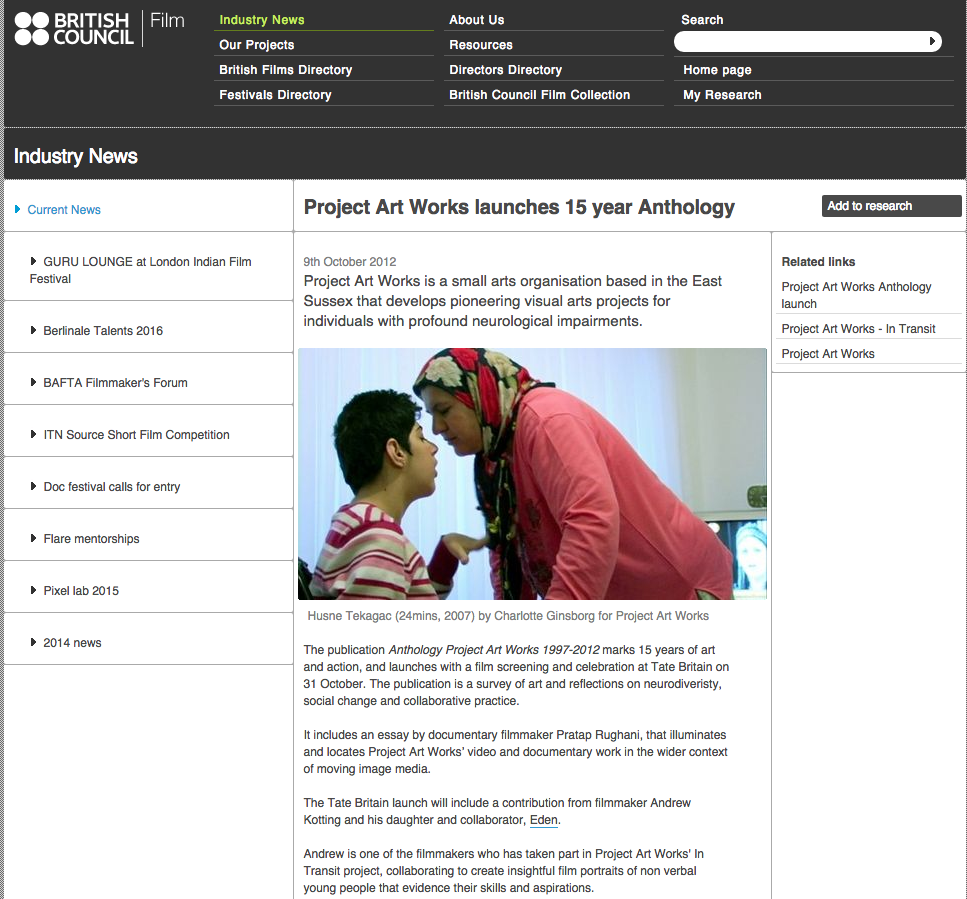-
Pratap Rughani contributed to The Creative Stance (2016), a book co-published by the University of the Arts London and Common-Editions on insights into creative teaching and practices.
UAL Chancellor Grayson Perry and 17 other leading artists, teachers, graphic designers, filmmakers, fashion designers, museum curators, sculptors and award-winning writers have come together to debate the creative behaviours needed for success and why they should form the foundation of education.
-
Feature article in MIRAJ (2016) Vol 5 Numbers 1 & 2 pp 170 – 184
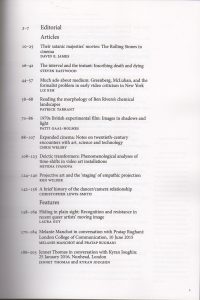
-
2023 Visible Evidence XXIV Documentary Studies Conference, Udine, Italy. Creating Impossible Conversations: Towards Restorative Narrative 2021 Aesthetica Festival Ethics for Making
2019 Kubrick’s Lens: how fake news designs conflict Kubrick: Designing Worlds Conference at The Design Museum, London.
2019 Testing Documentary Ethics in Research and Making: An Online Tool for Learning and Teaching. Visible Evidence XXVI, University of Southern California.
2018 Map My Ethics! i-Docs, Bristol UK, Developing i-doc Justine Interactive.
2018 Chair, Panel Debate Prof Mugendi M’Rithaa, President World Design Council, launching UAL Research Fortnight.
2018 Rethinking Research-Informed Teaching panel debate & paper; The Teaching-Research Nexus, LCC & Teaching/Learning Exchange, University of the Arts London.
2018 Whistling Woods International Film School XXIV, Mumbai, India. Paper & workshop. Re-writing Dr. Strangelove; black comedy and beyond in the age of Trump
2017 Visible Evidence XXIV Documentary Studies Conference, Buenos Aires, Argentina, Cartographies of Participatory Media.
2017 Cinetica, Mexico City National Museum/British Council screening / lecture Stanley Kubrick Dispatches from the Edge+ filmmakers’ workshop.
2017 Journal of Media Practice (JMP) and Media, Communication and Cultural Studies Association (MECCSA) Practice Symposium. Workshop & paper on Documentary Ethics. Bath Spa University.
2017 European League of Institutes of the Arts (ELIA) Art & Social Justice screening & workshop.
2017 National Association of Higher Education & Moving Image (NAHEMI). Paper/screening Research & Teaching Film Ethics.
2016 Representations of war and peace. Paper & panel convenor at Archbishop Desmond Tutu Centre for War and Peace Studies, Liverpool Hope University.
2016 De Montfort University. Leicester. Major retrospective conference on Stanley Kubrick. Paper: Stanley Kubrick Dispatches from the Edge.
2016 De Montfort University. Leicester. Major retrospective conference on Stanley Kubrick. Paper: Stanley Kubrick Dispatches from the Edge.
2016 Seoul Museum of Art Into the Archive: Re-Viewing Kubrick. Research from the Kubrick archive (published in Stanley Kubrick: New Perspectives.)
2016 Visible Evidence XXII, University. of Montana, Native American Visuality.
2015 Visible Evidence XXI, (Toronto University.) Stanley Kubrick Dispatches from the Edge.
2013 Visible Evidence XX, (Stockholm University.) The Dance of Documentary Ethics. Screening of Justine at Stockholm Academy of Dramatic Arts.
2013 Screening & paper for Into the Archive: Re-Viewing Kubrick at LACMA Los Angeles County Museum of Art.
2012 Screening & paper for “Truth, Dare or Promise”, The Art of Not Knowing, Goldsmiths College, London University.
2012 Screening & paper for AHRC Moving Image Research Network conference at University of the Arts London, The Dance of Documentary Ethics.
2011 Screening & paper at Tate Modern, Starr auditorium for “Embedded” conference with Simon Norfolk exhibition. Paper: Accidentally in Bed on access and censorship in reporting war.
2011 Documentary Now! Westminster University. Whose story? Ethical tensions and documentary narrative.
2010 ICA, London Remembering Khairlanji, (practice-based film and photography paper) for Histories of Hatred conference, which was also filmed for London Consortium / LCACE documentary.
2010 Visible Evidence XVII, leading forum for Documentary Film studies (Bogazici, University Istanbul, Turkey). Documentary Ethics in the Digital Age (practice-based paper).
2010 MECCSA, Media, Communication & Cultural Studies Association at London School of Economics. The Documentarist and the Subject practice-based (film and text) paper.
2009 Visible Evidence XVI, University of Southern California, 2009. Solidarity? With whom and to what? Practice-based paper on the creative space of observational documentary and the ethics of response.
2008 Visible Evidence XV, (University of Lincoln) Representing Atrocity: Ethical and Aesthetic Considerations in Photographing the Khairlanji Murders in India. Practice-based film and photography paper / book chapter based on this paper.
2008 Documentary Now! Birkbeck College, London University. Documentary Ethics.
-
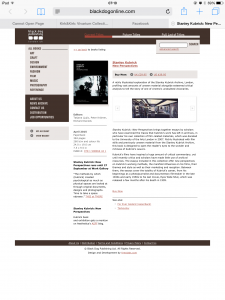 Black Dog Publishing release their new volume Stanley Kubrick: New Perspectives , which includes an essay by Pratap Rughani exploring Full Metal Jacket alongside Rughani’s experiences of filming in the civil war in Sierra Leone.
Black Dog Publishing release their new volume Stanley Kubrick: New Perspectives , which includes an essay by Pratap Rughani exploring Full Metal Jacket alongside Rughani’s experiences of filming in the civil war in Sierra Leone.The book is accompanied by an exhibition at WORK gallery in central London.
Stanley Kubrick: New Perspectives Exhibition: 8 August – 27 September 2014, Private View: Thursday 7 August, 6–8pm
“Stanley Kubrick: New Perspectives” book launch Jan Harlan & Pratap Rughani
Talk by photographer Paul Lowe, Pratap Rughani & Steve Mepsted with Monica Alcazar-Duarte & Lewis Bush, during Media & Myth: Mass Media and the Vietnam War at Hundred Years Gallery, London E2 8JD
-
“The Art of Not Knowing“ by Pratap Rughani in
Anthology : Project Art Works 1997–2012 pp 204 – 207.
Edited by Kate Adams and Phyllida Shaw ISBN: 0-9541014-5-6Project Art Works explores and promotes new practical and philosophical approaches to the meaningful involvement of people who have complex impairments in visual art activity that finds its way into mainstream programming and is of exceptional quality in its concept, aesthetic and production.
Maggie Hampton book review Anthology: Project Art Works 1997 – 2012
British Council reviews Anthology: Project Art Works.
-
This chapter investigates the relationship between ethics and aesthetics in forms of documentary arts and film practice, with a focus on the tension between ‘responsibility’ and ‘artistic freedom’ as interpreted by documentary artists and filmmakers.
Rughani, Pratap The Dance of Documentary Ethics chapter in: The Documentary Film Book, (2013) ed Brian Winston, BFI / Palgrave Macmillan. Shortlisted for the Kraszna Krausz Book Awards 2014.
-
2016 (Upcoming) Melanie Manchot in conversation with Pratap Rughani, for Moving Image Research Art Journal (MIRAJ) 2013 John Akomfrah in conversation with Pratap Rughani for Vol 2.1, for Moving Image Research Art Journal (MIRAJ) 2013 Round Table, Ethnography and Documentary in the Avant-Garde for Vol 2.1,for Moving Image Research Art Journal (MIRAJ) 2011 Where Three Dreams Cross Review article for Photography & Culture Journal 2004 A Place Called Home, Art South Africa 3, no. 1 2004 British Homeland, Essay in art catalogue A Place Called Home (British Council, South Africa). 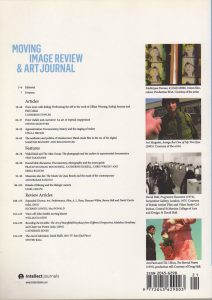
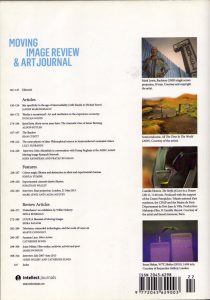
-
Documentary Ethics
The images in this gallery were taken for a photographic essay called ‘Remembering Khairlanji’. They form part of an exploration of documentary ethics discussed in the book chapter, “Are you a vulture? Reflecting on the ethics and aesthetics of coverage of atrocity and its aftermath” in “Journalism, War and Conflict Resolution” ed. R. Keeble, J.Tulloch & F. Zollmann, Foreword by John Pilger. Peter Lang (2010)
Download book chapter here
Buy the book here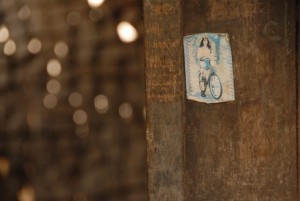
Chapter Abstract
“This chapter is framed by a sequence of documentary still images raising practice-based research questions about the nature of photographic representation of atrocity. Photographs are accompanied by practitioner reflections following a photographic essay responding to a series of caste-based murders in Khairlanji village, Maharashtra, central India.
The images throw up reflections on ethical and aesthetic choices in how to document atrocity. In addition to the shock of these events, I was stimulated (and humbled) in this work by reflecting on Susan Sontag’s critique of Holocaust photography as in general (to paraphrase) “re-victimising the victim.” What is the tension between striving to convey the full weight of and horror of such atrocities and the risk of cheapening (or worse) these events, at a time when some regard much contemporary media as already too sanitized. Are images of suffering, war and atrocity necessarily exploitative or are we coddled – protecting ourselves from fuller engagement with such realities? In the light of this, what might ‘ethical’ coverage look like?”
CAUTION: You may prefer not to look at the following slides of the murdered Bhotmange family.
They are included to help contextualise reflections on ethical questions that follow.
